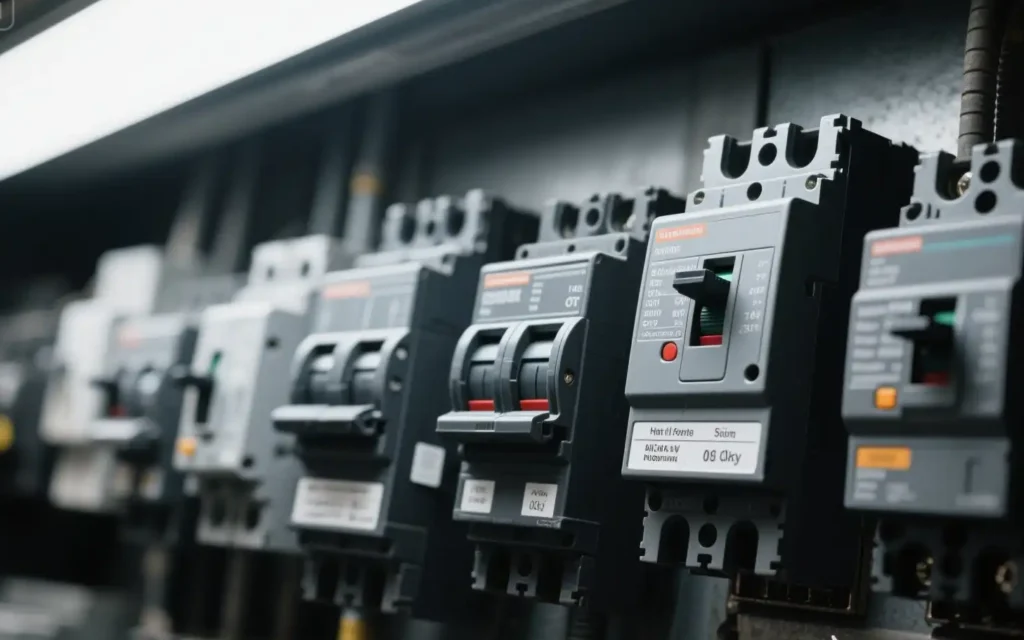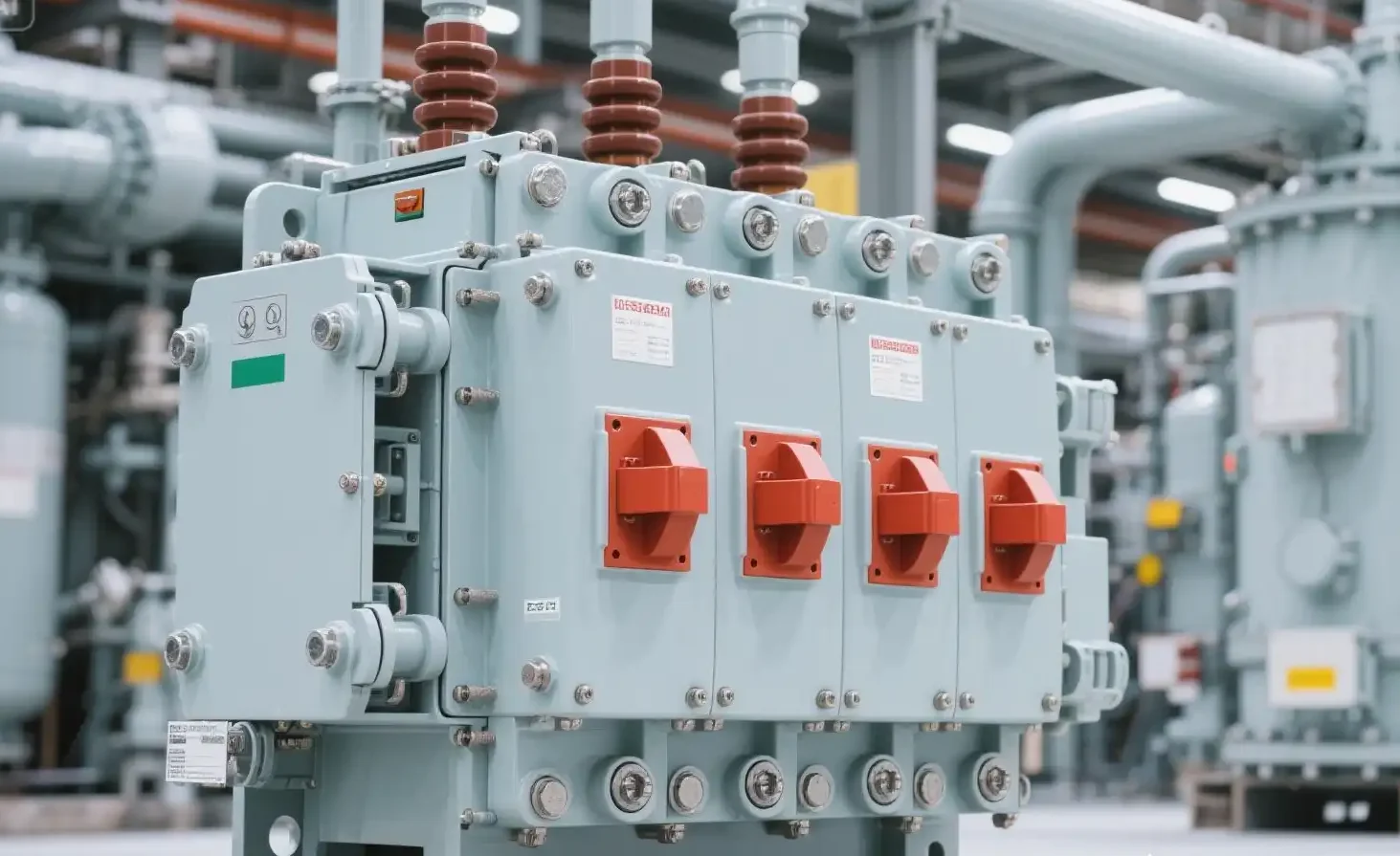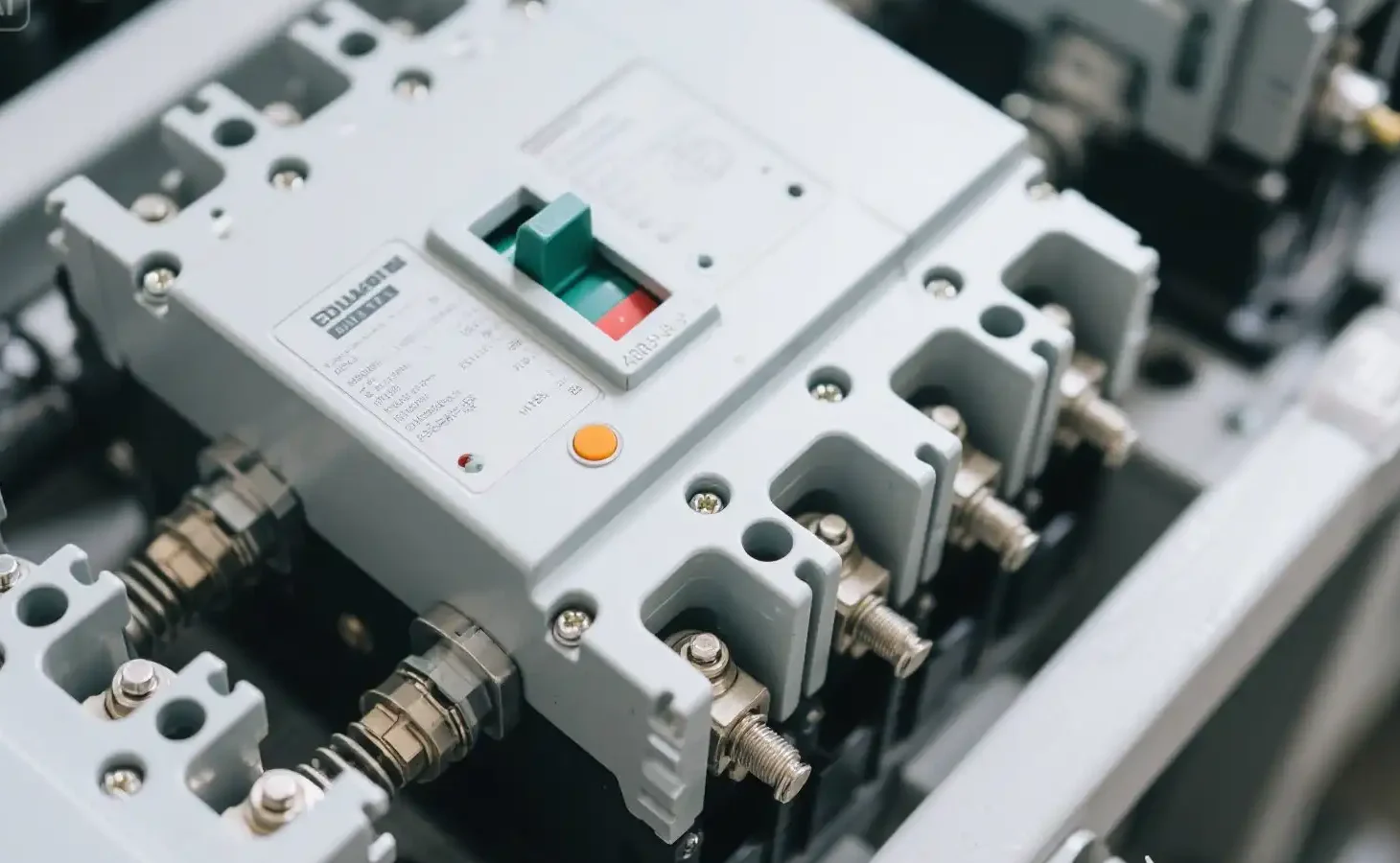When handling strong electrical needs, circuit breakers keep things safe. They stop fault currents before they cause harm to systems. Some of the best ones are industrial circuit breakers like the KACB6300. It can stop currents up to 6300A and handle peaks of 220 kA. These breakers work well with high fault currents. They also have digital monitoring for better performance and safety. Made for factories and big systems, they mix high voltage and current ratings. This makes them very safe and efficient to use.
Key Takeaways
-
Circuit breakers keep electrical systems safe by stopping fault currents.
-
Air Circuit Breakers (ACBs) are cheap and dependable for low-voltage use.
-
SF6 Circuit Breakers are small and work well for high voltage but may harm the environment.
-
Vacuum Circuit Breakers are green and need little upkeep, great for modern energy.
-
Hybrid Circuit Breakers mix features, working fast and well for high voltage.
1. Air Circuit Breaker
Overview of Air Circuit Breakers
Air circuit breakers (ACBs) are widely used in industries. They use air to stop fault currents, making them simple and reliable. These breakers are common in low-voltage systems because they are affordable and easy to maintain.
ACBs focus on safety and performance. They quickly find and stop faults to protect equipment. This helps keep systems running without interruptions. Their design makes installation and repairs easy, which is why industries prefer them.
What makes ACBs special is their flexibility. They work with many current and voltage levels. Whether in factories or utility systems, they handle faults well and keep operations smooth.
Tip: Test and maintain air circuit breakers often to improve their lifespan.
Maximum Ratings and Applications
Air circuit breakers have strong features for industrial and utility use. Here’s a summary of their top ratings:
|
Specification |
Value |
Units |
|---|---|---|
|
Rated maximum voltage |
123/145/170 |
kV |
|
Rated continuous current |
1,200/2,000/3,000 |
A |
|
Rated short-circuit current |
40 |
kA |
|
Rated closing, latching, and short-time carrying current |
104 |
kA |
|
Rated interrupting time |
3 |
cycles |
|
Rated break time |
50 |
ms |
For higher voltage needs, ACBs can go up to 245 kV. They can also handle continuous currents of 4,000 A. With a 40 kA interrupting capacity, they manage tough fault conditions easily.
These breakers are used in factories, power plants, and utility grids. They handle high fault currents safely and reliably. Meeting standards like ANSI/NETA ATS–2021 ensures they perform well.
If you need a breaker that is safe, flexible, and strong, ACBs are a great pick. Their design and easy testing make them a smart choice for long-term use.
2. SF6 Circuit Breaker
Overview of SF6 Circuit Breakers
SF6 circuit breakers are advanced industrial breakers. They use SF6 gas to stop electrical arcs. This gas is great for high voltage systems.
You’ll see SF6 breakers in power grids and utility systems. They are reliable and work well for modern energy needs. As renewable energy grows, these breakers are used more often.
But SF6 gas has a downside. It harms the environment and causes global warming. Many companies now look for eco-friendly options. Still, SF6 breakers are popular for their small size and strong performance.
Note: Test and maintain SF6 breakers often for safety and efficiency.
Maximum Ratings and Applications
SF6 circuit breakers handle very high electrical loads. Here are their main ratings:
|
Specification |
Value |
Units |
|---|---|---|
|
Rated maximum voltage |
800 |
kV |
|
Rated current rating |
6,300 |
A |
|
Rated breaking capacity |
63 |
kA |
|
Rated interrupting capacity |
50-63 |
kA |
|
Rated operating time |
2-3 |
cycles |
These breakers work well in substations and power plants. They manage big fault currents to keep systems safe. Their small size makes them easy to fit in tight spaces.
If you need a strong and reliable breaker, SF6 models are a good choice. Just remember their environmental impact and consider greener options if needed.
3. Vacuum Circuit Breaker
Overview of Vacuum Circuit Breakers
Vacuum circuit breakers are very dependable and work really well. They use a vacuum to stop electrical arcs during faults. This makes them safe and great for high voltage systems.
These breakers are strong and last a long time. They need little upkeep because the vacuum design reduces damage. They are also better for the environment. Unlike SF6 breakers, they don’t use harmful gases, making them eco-friendly.
Vacuum breakers are ideal for today’s energy systems. They work well with smart grids and have digital controls. This helps manage energy better and keeps systems running smoothly.
Tip: Test vacuum circuit breakers often to keep them working longer.
Maximum Ratings and Applications
Vacuum circuit breakers handle heavy electrical loads easily. Here’s a summary of their key features:
|
Key Features |
Details |
|---|---|
|
Vacuum Technology |
|
|
Eco-Friendly |
No harmful gases, a greener choice than SF6 breakers. |
|
Smart Grid Compatibility |
Digital tools help manage energy and improve reliability. |
These breakers can handle many voltage and current levels. They support up to 6,300 A, making them fit for high voltage tasks. They quickly stop faults, keeping systems safe and secure.
You’ll see these breakers in factories, substations, and power grids. They manage high fault currents with little maintenance. If you want a breaker that is strong, efficient, and eco-friendly, vacuum circuit breakers are a great option.
4. Oil Circuit Breaker
Overview of Oil Circuit Breakers
Oil circuit breakers are one of the oldest types still used. They use oil to insulate and stop electrical arcs. When a fault happens, the breaker stops the current. The arc is cooled and put out by the oil. This keeps the system safe and working well.
You’ll often see oil circuit breakers in outdoor substations. They are also used in high-voltage systems. These breakers are strong and handle high fault currents. But they need regular care to keep the oil clean and useful.
A key feature of oil circuit breakers is their strength. They work well in places where reliability is very important. While newer breakers like vacuum and SF6 are more common, oil breakers are still trusted in many systems.
Tip: Test your oil circuit breaker often. Replace the oil to make it last longer and work better.
Maximum Ratings and Applications
Oil circuit breakers can handle large electrical loads. Here’s a quick summary of their ratings:
|
Specification |
Value |
Units |
|---|---|---|
|
Rated maximum voltage |
245 |
kV |
|
Rated current rating |
4,000 |
A |
|
Rated breaking capacity |
50 |
kA |
|
Rated interrupting time |
3-5 |
cycles |
These breakers are great for high-voltage systems outdoors. They are used in power plants, substations, and factories. Their ability to handle high fault currents makes them reliable.
If you want a strong and proven breaker, oil circuit breakers are a good choice. Just remember to maintain them regularly for the best performance.
5. Hybrid Circuit Breaker
Overview of Hybrid Circuit Breakers
Hybrid circuit breakers mix features from different breaker types. They use both vacuum and gas insulation to stop faults. This makes them very reliable and efficient. If you want a breaker that balances cost and performance, hybrid breakers are a good choice.
These breakers are made for high-voltage systems. They work well in power grids and renewable energy setups. Their small size and smart design make them easy to fit in tight spaces. They are built to handle modern energy needs, like changing loads from renewable sources.
A key feature of hybrid breakers is their speed. They stop fault currents faster than older breakers. This quick action protects equipment and keeps systems running smoothly.
Did you know? Hybrid breakers are great for smart grids. They support digital controls and monitoring.
Maximum Ratings and Applications
Hybrid circuit breakers can handle heavy electrical loads. Here’s a summary of their main specifications:
|
Specification |
Value |
Units |
|---|---|---|
|
Rated maximum voltage |
800 |
kV |
|
Rated current rating |
6,300 |
A |
|
Rated breaking capacity |
63 |
kA |
|
Rated interrupting time |
2-3 |
cycles |
These breakers are perfect for high-voltage tasks. You’ll see them in power plants, substations, and renewable energy systems. They handle large fault currents, making them reliable for important systems.
If you need a breaker with advanced features and strong performance, hybrid breakers are a smart pick. They are compact, efficient, and ready for future energy needs.
When handling high electrical needs, circuit breakers are essential. Air breakers are easy to use and adaptable. SF6 breakers work best in high-voltage systems. Vacuum breakers are reliable and eco-friendly. Oil breakers are strong and long-lasting. Hybrid breakers mix features for modern energy needs.
These breakers protect power systems by keeping them safe and efficient. They are used in factories, substations, and utility grids. Picking the right breaker helps systems work smoothly and safely, whether upgrading or starting fresh.
FAQ
What makes MCCBs different from other circuit breakers?
MCCBs, or Molded Case Circuit Breakers, are small but handle more current than regular breakers. They are best for industrial jobs. Other breakers, like air or vacuum types, are made for specific tasks, such as high-voltage systems or eco-friendly uses.
How can I pick the right circuit breaker?
First, know your system’s voltage and current needs. Think about where and how it will be used. For example, vacuum breakers are better for the environment, while SF6 breakers work well with high voltage. Always ask an expert for advice.
Are hybrid circuit breakers better than older ones?
Hybrid breakers mix the best parts of older types, like vacuum and gas insulation. They are quicker, smaller, and more efficient. If you need a modern breaker for high voltage, hybrids are a smart choice.
Can circuit breakers work with renewable energy?
Yes, many breakers, like hybrid and vacuum types, are made for renewable energy systems. They handle changing power loads and work well with smart grids to keep things safe and efficient.
How often should I check my circuit breaker?
Check your breaker every year or follow the maker’s advice. For oil and SF6 breakers, focus on replacing oil or testing gas levels to keep them working well.
The following information may be of interest to you
Meaning of Surge Protector Parameters
The difference between MCCB and MCB
Difference Between Multi-Oil and Low-Oil Circuit Breakers






